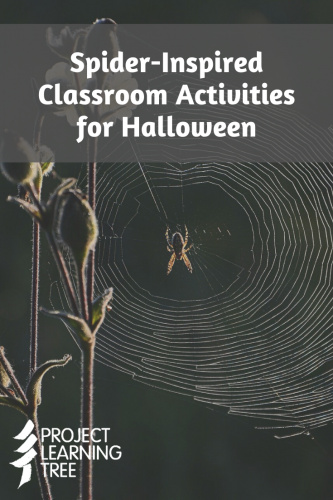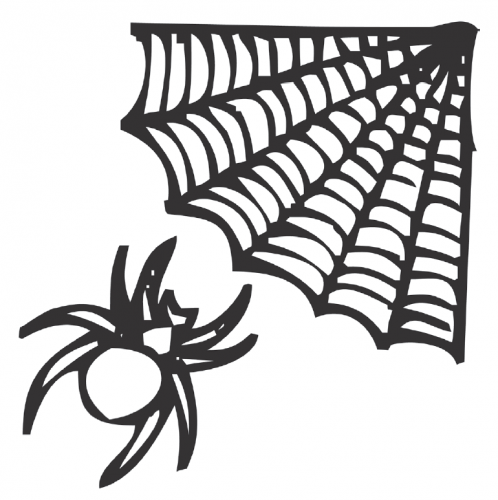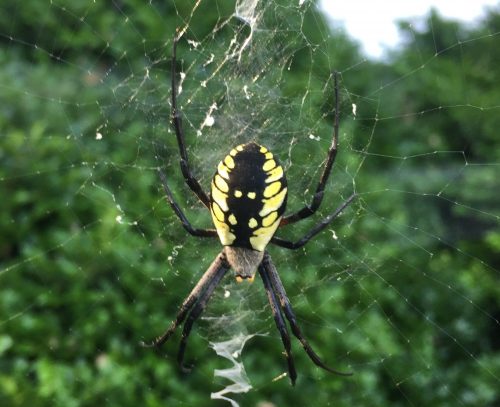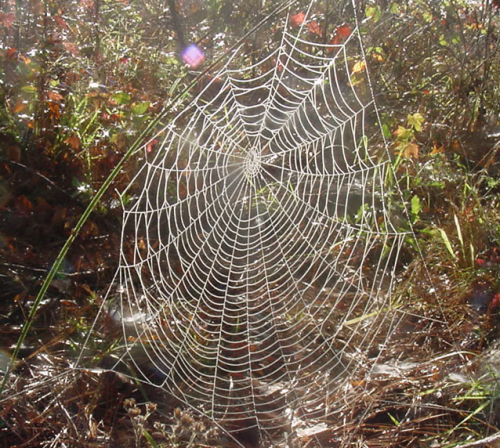 October is the month of all things spooky! Bats, jack-o-lanterns, and artificial spider webs set the stage for fall harvest parties and Halloween. In reality, spider webs adorn our porches, garages, and patios all year long, not just in the fall. However, autumn is the time of year when a few noticeable species like orb-weavers and giant house spiders find a mate and lay eggs before winter arrives. These types of spiders are much more active and visible in the fall, which may be one reason we associate spiders and their webs with the fall months.
October is the month of all things spooky! Bats, jack-o-lanterns, and artificial spider webs set the stage for fall harvest parties and Halloween. In reality, spider webs adorn our porches, garages, and patios all year long, not just in the fall. However, autumn is the time of year when a few noticeable species like orb-weavers and giant house spiders find a mate and lay eggs before winter arrives. These types of spiders are much more active and visible in the fall, which may be one reason we associate spiders and their webs with the fall months.
Spiders are skillful weavers
Each type of spider makes its own distinctive type of web. Webs take various forms, such as funnel shapes, triangular webs, globe webs, orb webs, and irregular-shaped webs.
Female spiders construct their webs with silk threads produced in special glands. Silk is released through openings, called spinnerets, in the spider’s abdomen. Tiny claws on the ends of the spider’s legs are used to handle and place the silk threads. Although most male spiders do not weave webs, they do build nests near a female’s web.
Spiders use their strong silk in many ways
Spiders make silk threads of different thicknesses, textures, and strengths. Threads that are not sticky make up the foundation of the web, and sticky threads are used for capturing prey. When an insect lands in a spider’s web, the spider feels the vibrations with its legs. Quickly, the spider moves to the insect and wraps the prey in its silk. Then the spider injects the prey with paralyzing poison using its fangs.
Spiders use fine threads to make nests and spin cocoons and for ballooning. “Ballooning” is when spiders throw out a long silk thread and use it to ride an air current. The wind catches the thread and carries the spider along.

A Tale from the Muskogee (Creek) Nation
For a Project Learning Tree spider-themed activity for grades K-6 that can be easily done if you are teaching remotely, check out Activity 18, Tale of the Sun in PLT’s PreK-8 Environmental Education Activity Guide. In this activity, your students can analyze a story told by the Muskogee (Creek) First Nation of present-day Oklahoma, called “How Grandmother Spider Stole the Sun”. Students develop an understanding of how groups of people, or cultures, use stories to describe natural relationships and events.
Read aloud the story “How Grandmother Spider Stole the Sun” from the activity’s Student Page (or provide copies for your students to read). Log in or register to access this free download (available in English or Español) along with other supporting resources for this activity. For example, you can also download a simple PowerPoint presentation created by Bea Futch of Cascade, Idaho, to accompany your narration of the “How Grandmother Spider Stole the Sun” story. The sequenced animal images match with the tale’s progression. Meet the bear, fox, possum, buzzard, and, of course, Grandmother Spider.
Spider-Themed Activities for the Classroom
Are you ready to add some spooky science to your fall lesson plans? We’ve gathered a whole cauldron of creepy, crawly spider science activities to enhance your lessons.
Note: PLT recommends students observe, not harm, spiders and spider webs in their natural habitat.

Observing how spiders approach their prey
With the Web It! outdoor activity from Lawrence Hall of Science, students investigate spider webs and spider feeding behavior. First, students catch small insects and drop them into spider webs they have found. Then, they will observe how spiders approach the insect and prepare the insect to be eaten.
Ages: 1st Grade – High School
Build a spider habitat
In this activity, students construct a spider habitat and then feed the spider insects to make observations about the spider’s behaviors.
This activity is a great capstone to reading Charlotte’s Web or after a unit about predator-prey relationships.

Examining spider webs
Students search outdoors for spider webs and then measure, sketch and examine the web in this activity from Education.com.
Ages: Elementary
This Web Weavers activity from the Lawrence Hall of Science incorporates biology and art when investigating spider webs. By lightly spraying water on spider webs, they will be able to carefully examine real spider webs in their natural setting.
Ages: 1st Grade – 8th Grade
Build a spider glider
Students design and build a spider form cardstock, string, straws and pipe cleaners. They, they attached their spider to a wall or door, and watch how their spider glides when it string gliders move with the air. Check out these instructions from the Science Museum of Minnesota.
Ages: Preschool-1st Grade
Build a spider model
Students can use household materials such as plastic cups and straws to build models of critters like centipedes and spiders. This activity is part of a larger resource with a number of other related activities to introduce students to invertebrates from the Biotechnological and Biological Science Research Council.
Ages: 1st Grade – 5th Grade
Cross-curricular spider activities for young students
Incorporate cross-curricular activities with the thematic unit from Scholastic.com. This plan includes “Spider Web Addition,” “Spider Informational Writing,” a spider craft, fine motor spider webs, spider snacks, and links to favorite videos.
Ages: PreK – Grade 2
Which materials are sticky enough to hold the “Incy Wincy” spider onto the waterspout? Students will investigate and test various materials in this STEM activity. This collection of activities from Science Sparks also includes instructions for making colorful web scratch art pictures, investigating different materials to see which make the most waterproof umbrellas for the spiders, and making cornflour goo.
Ages: Elementary Grades
The Magic School Bus and spiders
This activity can be used on its own or as an extension to The Magic School Bus Spins a Web. Students can observe spiders in their habitats and make spider hotels.
Ages: Grades 1-5
Design communication messages like Charlotte’s Web
In this activity from Teach Engineering, students learn about the different types of webs spiders make. Then, students use this knowledge to design and create their own webs with messages.
Ages: Grades 3-5
Spiders in space
Spiders were transported to space aboard Space Shuttle Endeavor in 2011 and teachers and students from around the world were encouraged to take part in a scientific investigation. This guide complements the program and includes instructions for housing and caring for a spider, as well as setting up a classroom-based investigation.
Ages: Middle school and high school
Additional resources
There is so much to learn about spiders! Children are naturally curious, and as you begin to teach about spiders, these resources can help answer some of their questions:


